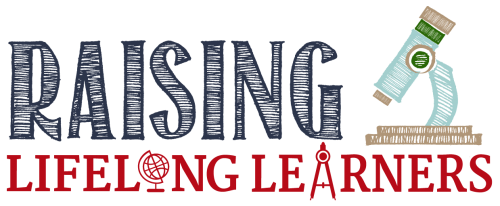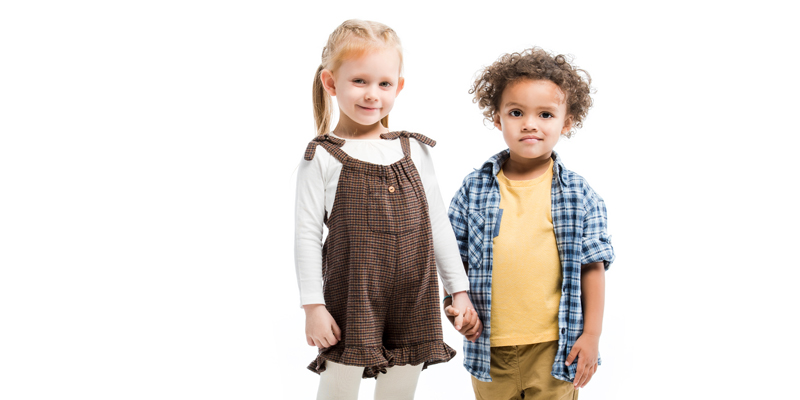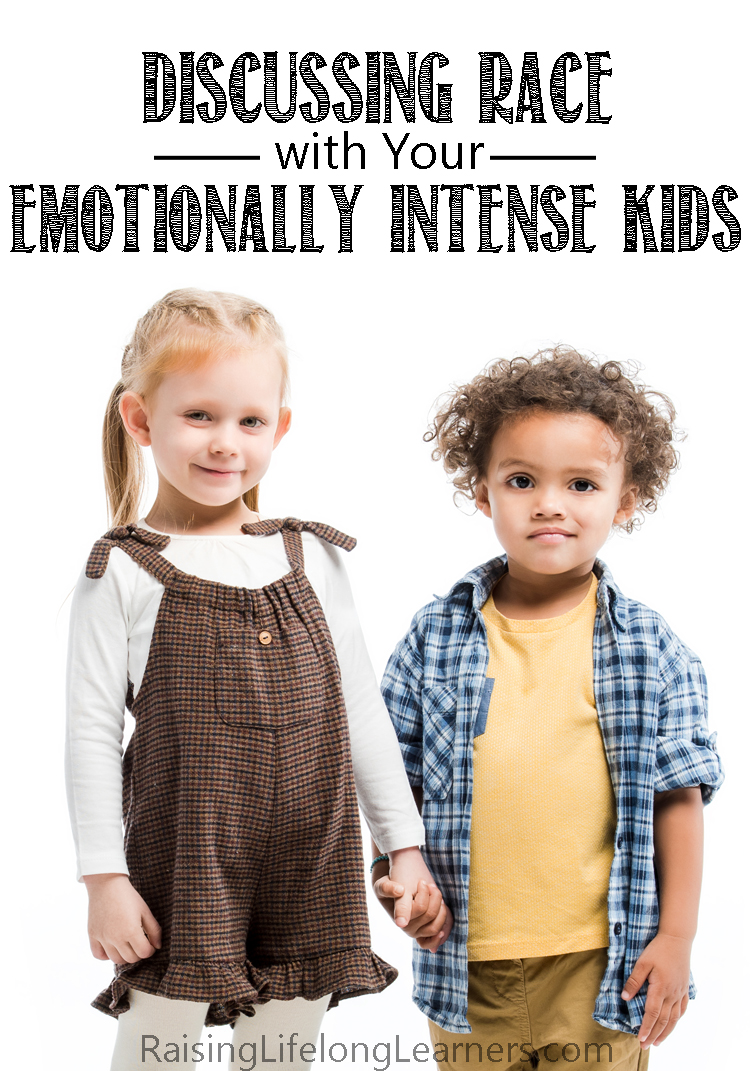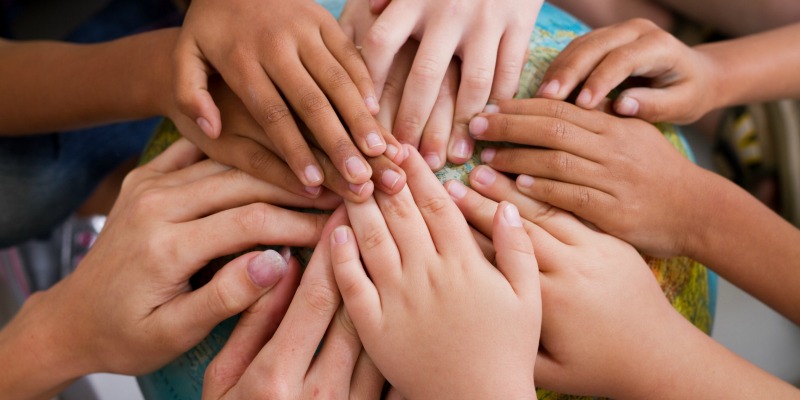Discussing Race With Your Emotionally Intense Kids
My kids, like many gifted kids, are pretty interested in current events and tend to somehow absorb the news, despite some of my attempts to filter it for them. My kids, like many gifted and twice-exceptional kids, also happen to be pretty emotionally intense. It can be hard to find the balance between informed and overwhelmed, especially when your brainy babes have a tendency to make connections, ask impossible questions, and even worry themselves to the point of anxiety. It can get especially emotional when discussing matters of race with your kiddos.
Whether it comes up during history lessons or from watching the news, your children are bound to be faced with matters of race and inequality, prejudice, punishment, and disenfranchisement. These topics are incredibly painful, especially when dealing with emotionally intense or anxious kiddos, and it can be difficult to know how much is too much to share, or even be tempted to gloss over the injustices altogether until we think they’re a little older, a little wiser, a little calmer. The world we live in, however, needs children who are well-versed and empathetic with it comes to racism and inequality, not just so that they can understand the news cycles, but so that they can help be part of changing our future. To create educated and empathetic allies, we must work through the discomfort and talk with our children about race.
I grew up, probably like many of you, in some pretty diverse areas. I had friends of all colors and often found myself at birthday parties and sleepovers without a single soul who looked like me. I loved this part of my childhood and still keep many of the same friends today, decades later. I learned so much from my friends of color and was privileged to sit at their dinner tables and enjoy foods I’d never heard of, hear music I never would have stumbled upon. My unquestioning acceptance and love for people of color, however, lured me into a false sense of positivity. I didn’t see what the big deal was if my friend was black or Asian or Hispanic or white, I saw their hearts and not their skin. Sure, I knew there were racist people “out there,” but if I could grow up to be “color blind” then surely others could, too, right?
As an adult, as a parent, I wanted to ensure that my kids had the same experiences I did. I wanted them to know people who looked and thought and lived differently than themselves, and I assumed that by keeping them in diverse classes, programs, and sports that they wouldn’t think twice about sitting next to someone with darker skin. I knew I didn’t harbor any hatred towards people of color, so surely my kids would grow to be great allies if only they played soccer with children who didn’t look like them… right?
The more I watched the news, the more I listened to my friends of color, the more I realized how wrong I’d been, how little I was actually doing to educate my children on matters of race, prejudice, and injustice. It wasn’t enough to raise my kids not to be racist. It wasn’t helpful to raise them to be “color blind.” What my kids need, and what is my responsibility, is to have the hard, awkward, uncomfortable, sometimes self-incriminating and humbling conversations about race. It’s not enough to toss them into a diverse crowd and be happy they have multicultural friends, we have to teach them how to acknowledge and celebrate color, rather than pretend it’s not a factor.
Related: Black History Month and Your Emotionally Intense Child , Helping Your Intense Child Regulate Emotions Easily
When I was in high school I read a book that was written in first person. I’d made it about a third of the way through the thick novel when I was suddenly jolted with the knowledge that the narrator was actually a man. I’d been reading this book the entire time through the filter of a teenaged girl. When I read that “I” walked into this room or someone approached “me,” it meant something completely different to the narrator than how I’d interpreted it. I had to stop right there, recover for a moment, and start the book all over.
Learning about race is this way. The world is viewed and experienced through many different lenses, and if we only use our own lens we may not fully grasp the truth of something, or may miss the beauty of another.
We must discuss race with our children, while taking into account their intense feelings and reactions and their tendency to worry. Knowing how easily gifted and twice-exceptional kids can take up a cause, we can see the world changed in their lifetime if only we equip them with knowledge and empathy. But how?
The Number One Rule
The number one rule when it comes to learning about different races is to listen to people of color. Our opinion isn’t sought or necessary. Our feelings are ours to manage. In order to truly understand the differences and the beauty of other races and cultures, we must be willing and intentional when it comes to listening to people who don’t look like yourself. Podcasts, YouTube channels, speakers, friends… when you hear someone sharing their feelings or experiences, listen. Keep in mind that you may not like everything that you hear, but the goal of the speaker is to educate, not to entertain. Be prepared to be uncomfortable, and be humble and willing enough to stay that way. If you truly want to learn about race, you must do so by accepting the idea that the lens through which you view the world has been more narrowed than you realized. You cannot digest the words of an Asian woman’s experience through the filter of being white. Simply put, when learning about another race, it’s about them, not you, so listen.
Educate Yourself
Whether you grew up “color blind” like me or surrounded by deeply-ingrained racism, there is always more to learn. Racism is much more than name-calling and segregation, and it’s important that we become students ourselves so that we can help guide our children through matters of race and injustice. The titles of these books may make you uncomfortable, and that’s okay. So many of us have grown up being taught that race was a taboo subject, or that it was simply enough to not use racial slurs. The titles and content of these books are meant to challenge you and what you’ve thought of as racism by opening your eyes to the actual experiences of people of color and how they are covertly disenfranchised, as well as offering helpful information on how you can help.
It’s okay to admit that you don’t know what you didn’t know. It’s okay to realize that you may not have been as helpful as you once thought. The important thing is to learn, adjust, and move forward. Leading your children by example and teaching them from an educated place of humbleness is the best and most important step in discussing race with your children.
Your kids are smart. They notice when people don’t look like them. They recognize names that don’t sound like theirs. They hear languages that are unfamiliar to them. Ignoring the obvious and pretending we all mesh together in this big melting pot is a sorely missed opportunity to celebrate the differences among us. We don’t need to teach our children to be “color blind,” we need to teach them to be color appreciative, color affirming. You may feel discomfort breaking the pc rules of our childhood when the discussion comes up, which is further proof of how important the conversation actually is. “Yes, that boy looks different because he is black.” Just say it. Out loud. Don’t shy away from identifying a different race, or your children will pick up on your hesitancy and assume that “black” is taboo. Embrace the differences. Don’t shuffle entire cultures under the rug under the banner of “unity,” but acknowledge how wonderful and textured unity is when it is made up of so much diversity.
Seek Out Multiple Mediums
Gifted and twice-exceptional kids can do a lot of things really well, one of them being learning. They can dive head-first into a topic and not come up for air for years. Use this to educate them on the different histories, cultures, key events, and notable figures of different races. You may approach the topic by diving into First Nations history and learning as much as you can about Native American culture, tribes, and the atrocities that have been committed towards them, or you can pick a time period and explore the unique circumstances of different races. It is of the utmost importance that you do not shield your children from the injustices faced by different races. So much of today’s racial tensions stem from centuries of mistreatment, so to attempt to understand the current pain we must delve into the past trauma.
You will need to preview material, however. My middle son called me once, hysterical, because he’d just read a very detailed and gruesome account of The Trail of Tears. Did he need to know about it? Absolutely. Would it have been better if I’d been there or prepared him a little? Definitely. Obviously edit out what may not be age appropriate, but don’t shy away from the empathetic emotions your child may experience.
Seek out documentaries, movies, books, museums, cultural days, any opportunity to learn about a different culture that appeals to the way your child learns. Visit ethnic restaurants or stores that cater to specific cultures. Listen to music or watch movies from other countries. Learm about how different cultures and races experienced and viewed key moments in history. Be prepared to discuss the emotions that bubble up. You won’t be able to gloss over the past, just acknowledge how painful it was. Help them talk through what they’re feeling and share your own emotions.
A Word About History
The history taught in public schools, and thus largely accepted as truth, has been altered beyond the point of recognition. We know that Columbus did not “discover” America, yet it is still taught as fact. It will be incredibly important to seek out accurate history, which is often times easier said than done. I’ve found that searching for and following homeschoolers of color on Instagram has proven to be the best resource when it come to accurate history books. As in any area, when it comes to race, you learn the most by listening to voices of color.
Some fantastic and accurate history books are A Young People’s History of the United States and An Indigenous Peoples’ History of the United States, as well as resources from Woke Homeschooling. If you’re not sure where to start, these Black History flash cards are an incredible tool for learning about notable figures and events in black history that have been ignored or glossed over by mainstream history.
Remember, you’re teaching your children an appreciation of different races and an understanding of the centuries of injustices and imbalances. You’re not trying to get them to memorize dates or remember who invented what. This is heavy material that may take a while to process. It’s okay to cry. It’s okay to not be able to answer when they inevitably ask, “But why?” When learning about a history that is not ours, we have the easy option to avoid the painful parts, but our friends of color do not. It is so important to fully engage in the painful pasts of people of color, to remember that our discomfort now has been their mourning for centuries. History is a part of what has led us to today, and we cannot discuss and learn about race without factoring it in.
Your Kids Are Not Too Young to Talk About Race
We love those images of children embracing, a black child and a white, fully unaware of the stark differences between their skin tone and focusing only on how much they enjoy playing together. We see images like that, the innocence of children, and are thankful that they don’t have to worry or think about the differences in their race. “We’ll talk about it when the time comes,” we think. I submit to you, however, that the time is now.
From picture books to novels, there are countless ways to spark conversation about different races and ways of life. Since the number one way to learn about race is to listen to people of color, it is imperative to read stories and experiences and perspectives that challenge our own. One of my favorite series, the Logan family saga, is an excellent – and sobering – peak into the lives of a black family coping with racism and circumstance before the civil rights movement. Books like The Sign of the Beaver and Never Caught: The Story of Ona Judge are wonderful for discussing how differently events are viewed through the lens of someone from a different race; what Europeans saw as colonization was viewed as theft and encroachment by the Native Americans, for example. Something Happened in Our Town takes place in modern times and includes tips for discussing current issues as a family. There are countless books to share with all ages, all with very important messages to convey. And don’t forget the books that celebrate people of color!
The Nitty Gritty
As I said before, though, we cannot simply expose our children to different races and hope that they turn out to be allies as adults. We must have the hard talks. Gifted and twice-exceptional kids tend to have big emotions, and I know I try to steer clear of movies or discussions that will trigger a deeply emotional response. Race, though, is a topic that is both too important to avoid, and too big a topic to dump all at once. If you know that your child will react deeply to learning about the horrors of slavery, then build up to it. You don’t have to learn about Japanese internment camps during your first discussion. Eventually, though, the tough stuff will come. Whether it’s from the news channels or the history books, they will see injustice. And, as all gifted kids will, they’ll ask, “Why?”
Because gifted kids can be so black and white, they will have a hard time understanding racism. Because gifted kids can think so far outside the box, they’ll have a hard time understanding the importance of honoring and acknowledging differences in race. Because gifted kids feel so deeply and think so quickly, they’ll have a million questions. Answer as many as you can. Admit that you don’t know when you can’t.
One of the hallmarks of giftedness is feeling deeply about injustice, whether they think their sibling got more marshmallows in their cereal or a person of color is treated poorly on an airplane. Your child will not understand the why of racism, and that’s okay. They will want to. They will ask and ask and scrunch their faces in confusion, but there will never be an answer that will satisfy them. The number one rule to learning about race is, as you hopefully remember by now, to listen to people of color.
The goal is not for it all to make sense, the goal is to recognize that our histories and perspectives are not the whole story, and it is important to listen to those with other perspectives and skin tones in order to truly learn. The goal is not to raise “color blind” children, but children who recognize color, who can recognize inequalities that stem from race, and to appreciate the beauty and nuance that each race proudly carries. The goal is to raise children who are willing to stand up when necessary, to know when to listen and when to speak out.
Yes, it will be tough. Yes, there will be questions you can’t answer. Yes, your child will likely be disturbed by what they learn. Yes, conversations may get a little uncomfortable and dicey. But the beauty of diversity far outweighs the horrors of history, and it is a duty we owe our children, a duty we owe the world, to discuss race and differences with our kids. Our friends of color can’t escape the conversation, so let’s join them.



